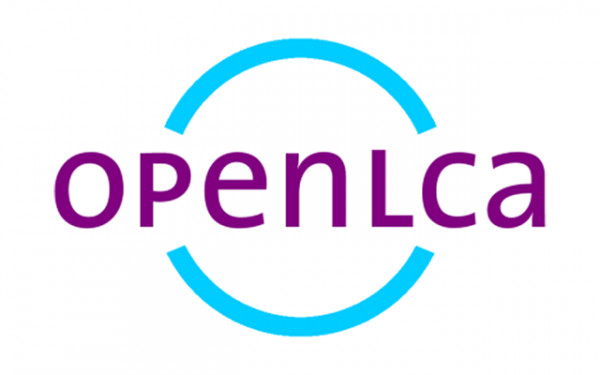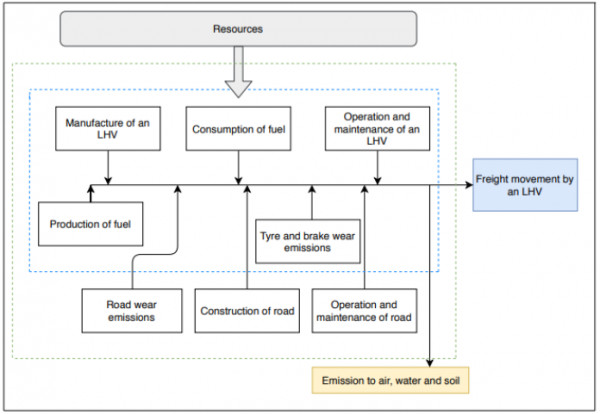 We are often being asked whether we have best-practice examples for LCA studies in openLCA. We do! Two of our colleagues recently worked on LCA case studies in openLCA which we would like to share with the openLCA community.
We are often being asked whether we have best-practice examples for LCA studies in openLCA. We do! Two of our colleagues recently worked on LCA case studies in openLCA which we would like to share with the openLCA community.
*Contact gd@greendelta.com if you created an LCA study in openLCA which you would like to share with the openLCA community too.
Comparative assessment of conventional truck transportation and Longer and Heavier Vehicles (LAHV) for freight transport
 Longer and Heavier Vehicles (LHVs) are considered a promising solution within the freight transport sector. The assessment of the environmental impacts of LHVs is new and has been partially addressed by existing literature. This case study aims to comprehensively evaluate the impact of introducing LHVs to the German transport context using ISO14040-compliant Life Cycle Assessment (LCA). To this purpose, a four-layer approach is defined: (i) initially, the life cycles of a LHV and a normal truck are compared; (ii) secondly, the two technologies are compared adding the impacts due to road construction, maintenance and end of life phase into the model; (iii) thirdly, different situations of LHV shares in the road transport modal share for freight transport are compared, (iv) followed with identifying the effects of increase in the overall market share for freight transport. The findings emerging from this case study suggest that while the impacts of LHV are significantly lower than that of a conventional truck, the benefits of introducing LHVs (where LHVs form 40% of the road transport modal share) would be negated if there is more than 30% increase in the demand for freight transport. This result is subject to change based on the modal share of the different mode of transportation. The LCA allows to assess the environmental impacts caused by the different transportation modal shares, eventually supporting the design of the optimal modal share under and environmental perspective.
Longer and Heavier Vehicles (LHVs) are considered a promising solution within the freight transport sector. The assessment of the environmental impacts of LHVs is new and has been partially addressed by existing literature. This case study aims to comprehensively evaluate the impact of introducing LHVs to the German transport context using ISO14040-compliant Life Cycle Assessment (LCA). To this purpose, a four-layer approach is defined: (i) initially, the life cycles of a LHV and a normal truck are compared; (ii) secondly, the two technologies are compared adding the impacts due to road construction, maintenance and end of life phase into the model; (iii) thirdly, different situations of LHV shares in the road transport modal share for freight transport are compared, (iv) followed with identifying the effects of increase in the overall market share for freight transport. The findings emerging from this case study suggest that while the impacts of LHV are significantly lower than that of a conventional truck, the benefits of introducing LHVs (where LHVs form 40% of the road transport modal share) would be negated if there is more than 30% increase in the demand for freight transport. This result is subject to change based on the modal share of the different mode of transportation. The LCA allows to assess the environmental impacts caused by the different transportation modal shares, eventually supporting the design of the optimal modal share under and environmental perspective.
DOWNLOAD Report
Comparative assessment of reusable ceramic cups and disposable paper cups

The study applies Life Cycle Assessment (LCA) for a comparative analysis of the environmental impacts of conventional reusable ceramic mugs with and without a lid and a disposable paper cup with a lid. For both ceramic mugs, the production, transport, use (including cleaning either by hand or with a dishwasher) and the end of life are considered. For the disposable paper cup, the production, use and end of life are assessed. The study is based on ecoinvent 3.4 and the LCIA method ILCD Midpoint+ (2016). Based on the results of the study, the use of a conventional ceramic cup with lid is strongly discouraged. A conventional ceramic cup without lid may be a greener option than disposable paper cups if used for a long period of time and washed either with a dishwasher or by hand with cold water. However, to enjoy an occasional Coffee-to-go, disposable paper cups actually pose the greenest solution.
DOWNLOAD Report
Get the openLCA models!
Request an LCA Collaboration Server user account via gd@greendelta.com (please note: we can only grant access to the studies above to users with a valid ecoinvent 3.4 license). Upon receiving your credentials, follow the steps below:
1) Enable the collaboration feature in openLCA and enter your credentials as explained in section 2.2.1 of the LCA Collaboration Server manual.
2) Right-click into your openLCA navigation page and create an empty database.
3) Fetch the repository into your empty database as explained in section 3.3 of the LCA Collaboration Server manual. The repository paths are demonstration_ecoinvent34/paper_cups and demonstration_ecoinvent34/truck_study for the respective study.